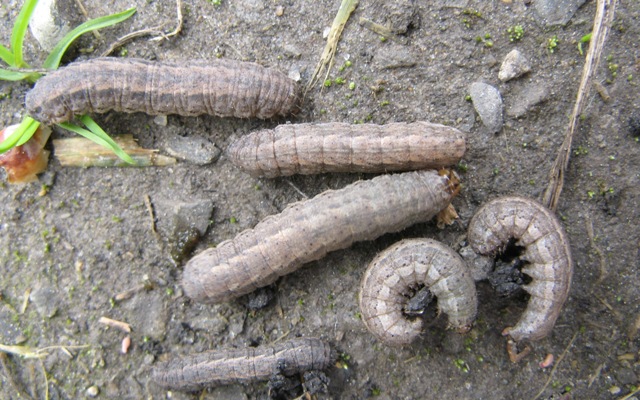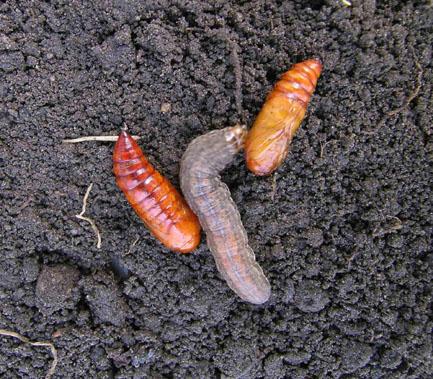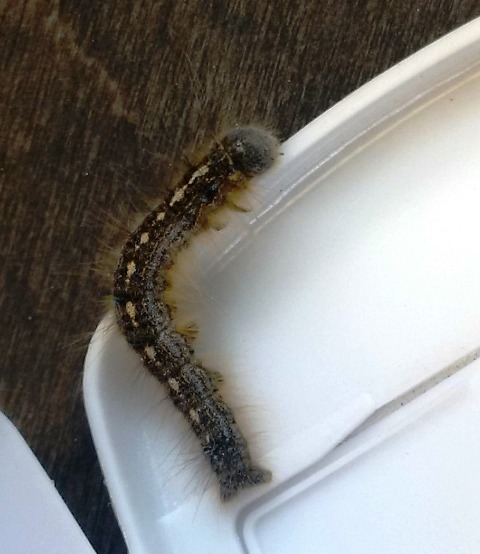Manitoba Insect and Disease Update: June 10, 2014
- John Gavloski, Entomologist
Manitoba Agriculture, Food and Rural Development
Phone: (204) 745-5668
Fax: (204) 745-5690. - Vikram Bisht, Plant Pathologist
Manitoba Agriculture, Food and Rural Development
Phone: (204) 745-0260
Fax: (204) 745-5690
To be placed on an E-mail list so you will be notified immediately when new Manitoba Insect and Disease Updates are posted, please contact John Gavloski at the address or numbers listed above.
- How long will they feed: If there are still a lot of cutworms under an inch long, then there is still ample time for higher populations to do economic damage. As a general guideline, once they get over an inch long they will be pupating soon and applying controls may be more expensive then the damage you are preventing.
- Will crops compensate for some cutworm feeding: Some crops, such as flax and peas, can compensate for some of the feeding by cutworms, while other crops, such as corn, have little ability to compensate for feeding by cutworms. Studies in Manitoba found that the loss of some flax plants at lower densities of redbacked cutworm resulted in an increase in per plant yield of remaining plants (The Canadian Entomologist. 1990. pg 21-28). Peas cut early and at the soil surface were able to regrow or branch from subsurface nodes. Canola has been noted to produce more yield per plant when stands get thinner to at least partially compensate for some plant loss, although I am not aware of this being tested specifically for cutworm feeding. However don't assume that the % stand reduction will equal the % yield loss for all crops.


Figure 1. Dingy Cutworm Figure 2. Redbacked cutworm larva and pupae
Note the diagonal markings that look like "V's" or tire tracks down the back of the dingy cutworms, and the 2 dull-red stripes down the back of the redbacked cutworm .
- These are not armyworms. Some have misidentified them as such.
- Forest tent caterpillars prefer to feed on broadleaf trees, and although you will see them on the ground they are not a pest of crops.
- By the end of June most of the larvae will likely be turning to pupae, so the feeding will be done for the year. Forest tent caterpillars are an early-season defoliator of trees. When levels are high defoliation may seem severe, but trees while produce more leaves and usually compensate quite well for feeding by forest tent caterpillars.

Figure 3. Forest tent caterpillar
Photo courtesy of Kaelyn Martin - Paterson Grain
Insect Monitoring Update
Diamondback Moth: It is likely that we had a moderate population of diamondback moth blow into some areas of Manitoba. Some higher counts have been recorded in traps in the Eastern and Northwest regions. However, there have been no reports of larvae yet. So we need to wait and see if anything develops from those populations of moths that are present. Highest trap counts, as of June 11th are: Stead (154), St. Adolphe (138), Teulon (75), Elm Creek (71).
Weekly maps for the monitoring program for diamondback moth can be found at: http://www.gov.mb.ca/agriculture/crops/insects/diamondback-moth-monitoring.html
